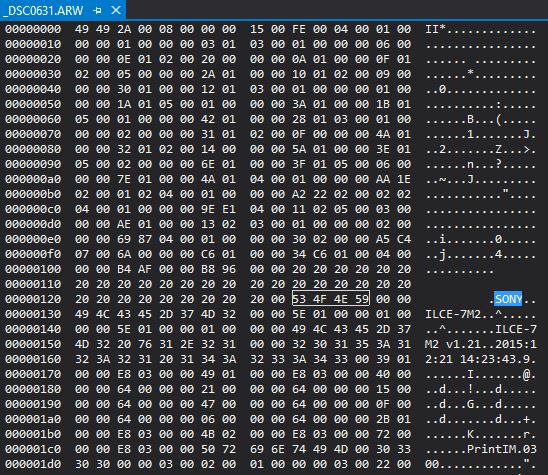

Overview
The RAW file format in digital photography can be considered as the digital Negative.
The file contains "raw" pixel information ( red, green, or blue value at each pixel location.) straight from the digital camera's sensor.
RAW == NO COMPRESSION
Basically this a the format that is not processed and hold the maximum information possible.
RAW vs JPEG
Compared to a JPEG image, the RAW image provides
- Post processing demosaicing.
- Flexible white balance
- High bit depth (finer tuning of the colors for each pixel) (JPEG uses 8bit per channel, RAW 12bits)
- Dynamic Range and exposure compensation (wider range of color)
- Better sharpening
- Lossless compression
In other words, if configured correctly, you should achieve better results with RAW than with a precomressed JPEG file.
But the use of RAW comes with a price
- The RAW files are bigger than the JPEG onces (10 to 20 times) and it takes more processing power and disk space (computer resources)
- The RAW files are NOT IMMEDIATELY READY for printing or sharing
- The RAW file requires post processing and therefore YOUR TIME
Reference: https://en.wikipedia.org/wiki/Raw_image_format
Standardisation
Unfortunatly RAW format is NOT standardized yet and each manufacturers comes with some specificities. Usually each manufacturer will provide the solfware to process the files. The major postprocessing software (i.e. Adebe LightRoom) will support the majority of the manufactures.
Digital Negative Format (DNG)
Each camera uses a proprietary format that differs from one camera to the next; your Canon Raw files (.cr2's) differ from your Nikon Raw files (.nef's) or Olympus Raw files (.orf's), and so on. Each camera manufacturer develops its own format.
Adobe developed the DNG format to help address the problem of the uncertain future of file types. Unlike Raw, DNG is an open format that many developers can create applications to work with.
Reference: http://photography.tutsplus.com/tutorials/5-tricks-to-improve-adobe-lightroom-cc-performance--cms-25285
SONY ARW files
Just as an example here is the ARW file format from SONY.

Conclusion
If you are looking to have control of your shots and being able to post process them, then you need to shot RAW.
If you are looking to quickly share your shots without processing or applying predefined filters (such as instagram) then you might select JPEG but you probably won't reach the technical quality of a RAW shot.
That said, photography is much more than the technical aspect and nothing, really nothing will replace the talent of the photographer.
